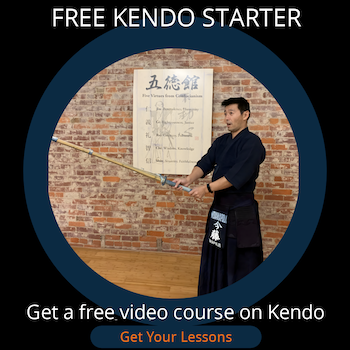Need Kendo Instructions?
You Got It!
You Got It!
What is the difference between Hari, Harai and Hajiki?
by J. Villaran
(Lima, Peru)
I was wondering the difference between these 3 terms:
Hari
Harai
Hajiki
In my research I just found that all of them are included in the term 'Harai' but nothing more. I have seen them used in Hidekatsu Inoue's Kendo Videos. He shows that hari and hajiki are softer than harai and hari only moves the arms without moving the whole body forward. He doesn't explain much verbally. This is all I could find. I read that finding information about this is difficult including in Japan. Do you know something about this.
Answer: I have asked Hidekatsu Inoue sensei about the difference among hari, harai and hajiki.
For those who are not sure what we are talking about here:
These are the names of techniques to move your opponent’s shinai out of your way so you can get in and strike.
Now, there are many names for the similar techniques. The difference is the how hard you hit your opponent’s shinai with your shinai to move your opponent’s shinai out of your away.
Among the three techniques in question here, hari, harai and hajiki, hajiki is the weakest. Harai is the middle and the Hari is the strongest. So if you use hari to move your opponent’s shinai out of your way, you have to hit your opponent’s shinai relatively hard.
Besides, Inoue sensei explains, in hajiki and harai, you want to hit your opponent’s shinai diagonally. Hari, on the other hand, you hit your opponent’s shinai almost sideways using your wrists.
He also gave me other examples so I would like to share them with you. Most of the names are not used in the modern kendo anymore but you can see some names that are familiar to us. * are the terms that could be used in the modern kendo.
1. Sawaru (Fureru): Touch
2. Tsukeru: Place
3. Osu*: Push
4. Utsu: Hit/strike
5. Tataku: Beat
6. Osaeru*: Press
7. Hajiku: Flick
8. Harau*: Flip
9. Haru: Slap
10. Maki-osaeru: Roll and press
11. Uchi-otosu*: Knock down
12. Maki-otosu*: Roll down
13. Maki-ageru*: Roll up
Sawaru requires the least strength since you just touch the shinai of your opponent. Maki-ageru is a verb form of maki-age. We use this in kendo too.
Even though we do not use some of the terms in kendo, we probably do them in kendo. For example, we do not use the words, utsu and tataku, in kendo but we do them quite often in kendo.
Thank you for the question. I learned as well.
Click here to read or post comments

